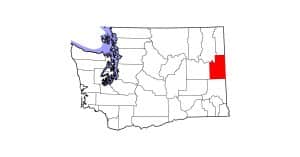LSU Veterinary School Offers MRI for Horses
The LSU School of Veterinary Medicine recently acquired a Hitachi Echelon 1.5 Tesla MRI unit. This is the first and only high field MRI unit in the state of Louisiana for veterinary use. Since March 30, the LSU Veterinary Teaching Hospital has scanned more than 56 patients with the MRI. Located on the first floor of the hospital, the MRI is accessible through the main hospital building and the Equine Hospital’s breezeway. This allows both small and large animal patients to be examined.
“With this magnet, LSU is in the upper echelon for veterinary diagnostic imaging,” said Lorrie Gaschen, DVM, PhD, Dipl. ECVDI, associate professor of veterinary radiology. “We match or exceed the technology of any other veterinary school in the country.”
With only 28 veterinary schools in the country, keeping up with new technology is important. “This technology is an indispensable diagnostic tool,” Gaschen said. “The high field strength of this magnet equates to a better signal, better images, and a shorter scan time. A shorter scan time means less time that an animal has to be under anesthesia.”
Magnetic resonance imaging, or MRI, is a non-invasive technique that uses strong magnetic fields to produce images of practically any part of the body. MRI has significant advantages over other imaging modalities, such as CT scans. With MRI, no ionizing radiation is involved; instead, a powerful magnet is used to send and receive radiofrequency impulses between it and the patient that carry information specific to the tissue type. This produces high resolution images that are especially good for contrasting different types of soft tissue, so that fat, muscle, fluids, as well as the grey and white matter of the brain, can be easily visualized and differentiated from one another. This makes MRI ideal for detecting lesions in the brain, spine, and musculoskeletal system
Create a free account with TheHorse.com to view this content.
TheHorse.com is home to thousands of free articles about horse health care. In order to access some of our exclusive free content, you must be signed into TheHorse.com.
Start your free account today!
Already have an account?
and continue reading.
Written by:
Edited Press Release
Related Articles
Stay on top of the most recent Horse Health news with












